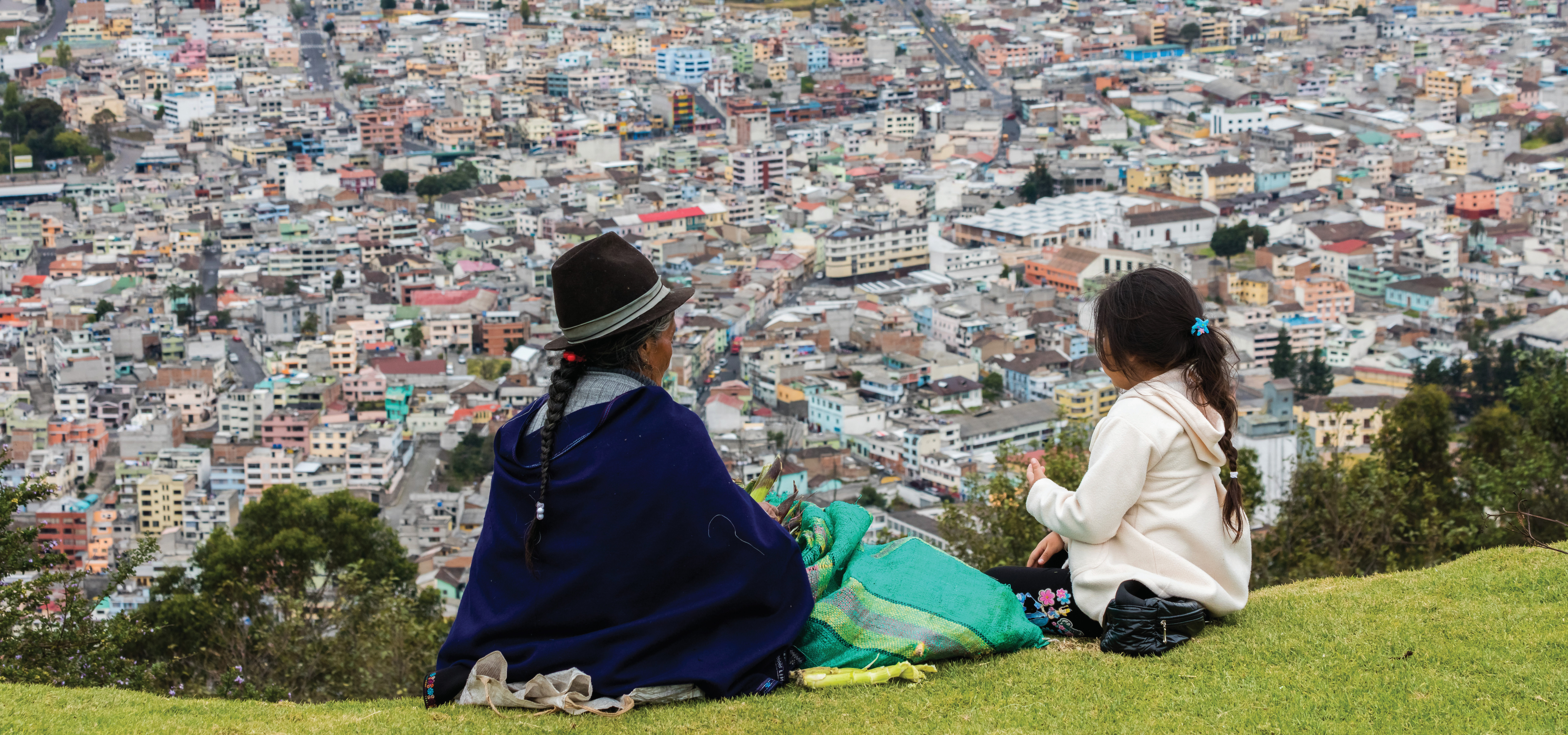Climate change is not gender neutral. The Paris Agreement makes special provision for gender mainstreaming in the fight against the negative impacts of climate change because, overall, women and children will bear to a greater extent the brunt of these impacts through hunger, displacement, and insecurity.
The nation of Ecuador is well-known for its national plan, Buen Vivir, which focuses on developing the country in terms of the well-being of its people and environment. This includes equity along generational, intercultural, territorial, and gender lines. Recognising existing inequities, the Ecuadorian Constitution positions the role of women in the country’s economy: in the world of work, women are to have full access to the means of production, and in the larger society, full access to property and educational opportunities. Ecuador has also produced a National Agenda for Women and Gender Equality, and its Finance Ministry has set up a Gender Equity Unit. While most of these are based on addressing discrimination, they set the stage for a major role for women in Ecuador’s adaptation to climate change. Climate change, through El Niño events, floods, and landslides, threatens to erode gender equality rights by stalling development and multiplying existing environmental and social stresses.
Gender Mainstreaming
Ecuador’s NDCs to the Paris Agreement, updated in 2019, intends to facilitate participation of actors as agents of change and to encourage their commitment to the process of formulating the NDC. The gender approach will be integrated in each phase of this process. GWP South America is collaborating with Ecuador’s Ministry of Environment and Water, the NDC Partnership, and other agencies to support Ecuador’s implementation of the country’s NDC, focusing on the inclusion of gender.
GWP’s work is supporting the country to move beyond adaptation policy. It is developing the capacity of Ecuadorian stakeholders to incorporate gender perspectives in planning and tools, and, as this takes place, changing thinking to include a critical awareness of gender roles and norms among men and women. Addressing structural inequalities is a condition for successful climate adaptation and resilience. As the social norms linked to access and management of water resources are deeply embedded in institutional processes, the socio-political and economic structures and processes that underpin vulnerability to climate-induced water challenges need to be considered and fully understood.
Inclusive climate adaptation approach
Building on the country’s ongoing work to develop climate hazard identification and risk assessment, the indicators that are developed will ensure the long-term capacity to monitor gender-related issues using relevant and available information. Examination of legislation, policies, and instruments takes into account institutional needs to support long-term results. These needs are then captured in the development of a capacity building strategy for institutions involved in the adaptation component of the NDC Implementation Plan, focused on implementation of goals that include a gender perspective. Preparing technical guidelines in a participatory way provides a conceptual framework for country stakeholders that will allow them to design and implement gender-sensitive adaptation measures at sectoral and local levels.
All of these activities are contributing to broader knowledge about effective approaches to the role of gender in adaptation through sharing with GWP partners at the national, regional, and global levels, and by including key insights into GWP’s broader climate work. GWP is using its experience in adaptation and the gender approach, helping to catalyse the work that the Ecuadorian Government has been building in recent years, through many activities and programmes.

